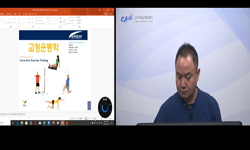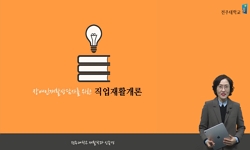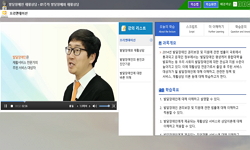Research into rehabilitation robotics has grown rapidly and the number of therapeutic rehabilitation robots has expanded dramatically during the last two decades. Robotic rehabilitation therapy can deliver high-dosage and high-intensity training, maki...
http://chineseinput.net/에서 pinyin(병음)방식으로 중국어를 변환할 수 있습니다.
변환된 중국어를 복사하여 사용하시면 됩니다.
- 中文 을 입력하시려면 zhongwen을 입력하시고 space를누르시면됩니다.
- 北京 을 입력하시려면 beijing을 입력하시고 space를 누르시면 됩니다.
https://www.riss.kr/link?id=A101608190
- 저자
- 발행기관
- 학술지명
- 권호사항
-
발행연도
2013
-
작성언어
-
- 주제어
-
등재정보
KCI등재후보,SCIE,SCOPUS
-
자료형태
학술저널
- 발행기관 URL
-
수록면
174-181(8쪽)
-
KCI 피인용횟수
106
- DOI식별코드
- 제공처
-
0
상세조회 -
0
다운로드
부가정보
다국어 초록 (Multilingual Abstract)
Research into rehabilitation robotics has grown rapidly and the number of therapeutic rehabilitation robots has expanded dramatically during the last two decades. Robotic rehabilitation therapy can deliver high-dosage and high-intensity training, making it useful for patients with motor disorders caused by stroke or spinal cord disease. Robotic devices used for motor rehabilitation include end-effector and exoskeleton types; herein, we review the clinical use of both types. One application of robot-assisted therapy is improvement of gait function in patients with stroke. Both end-effector and the exoskeleton devices have proven to be effective complements to conventional physiotherapy in patients with subacute stroke, but there is no clear evidence that robotic gait training is superior to conventional physiotherapy in patients with chronic stroke or when delivered alone. In another application, upper limb motor function training in patients recovering from stroke, robot-assisted therapy was comparable or superior to conventional therapy in patients with subacute stroke. With end-effector devices, the intensity of therapy was the most important determinant of upper limb motor recovery. However, there is insufficient evidence for the use of exoskeleton devices for upper limb motor function in patients with stroke. For rehabilitation of hand motor function, either end-effector and exoskeleton devices showed similar or additive effects relative to conventional therapy in patients with chronic stroke. The present evidence supports the use of robot-assisted therapy for improving motor function in stroke patients as an additional therapeutic intervention in combination with the conventional rehabilitation therapies. Nevertheless, there will be substantial opportunities for technical development in near future.
참고문헌 (Reference)
1 정경훈, "만성 뇌졸중 환자에서 운동 기능 회복에 대한 로봇-보조 보행치료의 효과" 대한재활의학회 32 (32): 258-266, 2008
2 Mayr A, "[ARMOR: an electromechanical robot for upper limb training following stroke. A prospective randomised controlled pilot study]" 40 : 66-73, 2008
3 Morone G, "Who may benefit from robotic-assisted gait training? A randomized clinical trial in patients with subacute stroke" 25 : 636-644, 2011
4 Masiero S, "Upper-limb robot-assisted therapy in rehabilitation of acute stroke patients: focused review and results of new randomized controlled trial" 48 : 355-366, 2011
5 Werner C, "Treadmill training with partial body weight support and an electromechanical gait trainer for restoration of gait in subacute stroke patients: a randomized crossover study" 33 : 2895-2901, 2002
6 Schwartz I, "The effectiveness of locomotor therapy using robotic-assisted gait training in subacute stroke patients: a randomized controlled trial" 1 : 516-523, 2009
7 Peurala SH, "The effectiveness of body weight-supported gait training and floor walking in patients with chronic stroke" 86 : 1557-1564, 2005
8 Sivan M, "Systematic review of outcome measures used in the evaluation of robot-assisted upper limb exercise in stroke" 43 : 181-189, 2011
9 Langhorne P, "Stroke rehabilitation" 377 : 1693-1702, 2011
10 Hong KS, "Stroke Statistics in Korea: Part I. Epidemiology and Risk Factors: A Report from the Korean Stroke Society and Clinical Research Center for Stroke" 15 : 2-20, 2013
1 정경훈, "만성 뇌졸중 환자에서 운동 기능 회복에 대한 로봇-보조 보행치료의 효과" 대한재활의학회 32 (32): 258-266, 2008
2 Mayr A, "[ARMOR: an electromechanical robot for upper limb training following stroke. A prospective randomised controlled pilot study]" 40 : 66-73, 2008
3 Morone G, "Who may benefit from robotic-assisted gait training? A randomized clinical trial in patients with subacute stroke" 25 : 636-644, 2011
4 Masiero S, "Upper-limb robot-assisted therapy in rehabilitation of acute stroke patients: focused review and results of new randomized controlled trial" 48 : 355-366, 2011
5 Werner C, "Treadmill training with partial body weight support and an electromechanical gait trainer for restoration of gait in subacute stroke patients: a randomized crossover study" 33 : 2895-2901, 2002
6 Schwartz I, "The effectiveness of locomotor therapy using robotic-assisted gait training in subacute stroke patients: a randomized controlled trial" 1 : 516-523, 2009
7 Peurala SH, "The effectiveness of body weight-supported gait training and floor walking in patients with chronic stroke" 86 : 1557-1564, 2005
8 Sivan M, "Systematic review of outcome measures used in the evaluation of robot-assisted upper limb exercise in stroke" 43 : 181-189, 2011
9 Langhorne P, "Stroke rehabilitation" 377 : 1693-1702, 2011
10 Hong KS, "Stroke Statistics in Korea: Part I. Epidemiology and Risk Factors: A Report from the Korean Stroke Society and Clinical Research Center for Stroke" 15 : 2-20, 2013
11 Stein J, "Robotics in rehabilitation: technology as destiny" 91 : 199-203, 2012
12 Pignolo L, "Robotics in neuro-rehabilitation" 41 : 955-960, 2009
13 Masiero S, "Robotic-assisted rehabilitation of the upper limb after acute stroke" 88 : 142-149, 2007
14 Esquenazi A, "Robotic-assisted gait training and restoration" 91 : 217-231, 2012
15 Lum PS, "Robotic approaches for rehabilitation of hand function after stroke" 91 : 242-254, 2012
16 Fazekas G, "Robot-mediated upper limb physiotherapy for patients with spastic hemiparesis: a preliminary study" 39 : 580-582, 2007
17 Takahashi CD, "Robot-based hand motor therapy after stroke" 131 : 425-437, 2008
18 Burgar CG, "Robot-assisted upper-limb therapy in acute rehabilitation setting following stroke: Department of Veterans Affairs multisite clinical trial" 48 : 445-458, 2011
19 Lo AC, "Robot-assisted therapy for long-term upper-limb impairment after stroke" 362 : 1772-1783, 2010
20 Kahn LE, "Robot-assisted reaching exercise promotes arm movement recovery in chronic hemiparetic stroke: a randomized controlled pilot study" 3 : 12-, 2006
21 Lum PS, "Robot-assisted movement training compared with conventional therapy techniques for the rehabilitation of upper-limb motor function after stroke" 83 : 952-959, 2002
22 Daly JJ, "Response to upper-limb robotics and functional neuromuscular stimulation following stroke" 42 : 723-736, 2005
23 Pohl M, "Repetitive locomotor training and physiotherapy improve walking and basic activities of daily living after stroke: a single-blind, randomized multicentre trial (DEutsche GAngtrainerStudie, DEGAS)" 21 : 17-27, 2007
24 Kutner NG, "Quality-of-life change associated with robotic-assisted therapy to improve hand motor function in patients with subacute stroke: a randomized clinical trial" 90 : 493-504, 2010
25 Mayr A, "Prospective, blinded, randomized crossover study of gait rehabilitation in stroke patients using the Lokomat gait orthosis" 21 : 307-314, 2007
26 Westlake KP, "Pilot study of Lokomat versus manual-assisted treadmill training for locomotor recovery post-stroke" 6 : 18-, 2009
27 Hidler J, "Multicenter randomized clinical trial evaluating the effectiveness of the Lokomat in subacute stroke" 23 : 5-13, 2009
28 Pekna M, "Modulation of neural plasticity as a basis for stroke rehabilitation" 43 : 2819-2828, 2012
29 Lum PS, "MIME robotic device for upper-limb neurorehabilitation in subacute stroke subjects: A follow-up study" 43 : 631-642, 2006
30 Kwakkel G, "Intensity of leg and arm training after primary middle-cerebral-artery stroke: a randomised trial" 354 : 191-196, 1999
31 Hwang CH, "Individual finger synchronized robot-assisted hand rehabilitation in subacute to chronic stroke: a prospective randomized clinical trial of efficacy" 26 : 696-704, 2012
32 Fischer HC, "Hand rehabilitation following stroke: a pilot study of assisted finger extension training in a virtual environment" 14 : 1-12, 2007
33 European Stroke Organisation Executive C, "Guidelines for management of ischaemic stroke and transient ischaemic attack 2008" 25 : 457-507, 2008
34 Hornby TG, "Enhanced gait-related improvements after therapist- versus robotic-assisted locomotor training in subjects with chronic stroke: a randomized controlled study" 39 : 1786-1792, 2008
35 Mehrholz J, "Electromechanical-assisted training for walking after stroke" 006185-, 2007
36 Mehrholz J, "Electromechanical-assisted gait training after stroke: a systematic review comparing end-effector and exoskeleton devices" 44 : 193-199, 2012
37 Mehrholz J, "Electromechanical and robot-assisted arm training for improving generic activities of daily living, arm function, and arm muscle strength after stroke" 6 : 006876-, 2012
38 Liao WW, "Effects of robot-assisted upper limb rehabilitation on daily function and real-world arm activity in patients with chronic stroke: a randomized controlled trial" 26 : 111-120, 2012
39 Norouzi-Gheidari N, "Effects of robot-assisted therapy on stroke rehabilitation in upper limbs: systematic review and meta-analysis of the literature" 49 : 479-496, 2012
40 Chang WH, "Effects of robot-assisted gait training on cardiopulmonary fitness in subacute stroke patients: a randomized controlled study" 26 : 318-324, 2012
41 Husemann B, "Effects of locomotion training with assistance of a robot-driven gait orthosis in hemiparetic patients after stroke: a randomized controlled pilot study" 38 : 349-354, 2007
42 Peurala SH, "Effects of intensive therapy using gait trainer or floor walking exercises early after stroke" 41 : 166-173, 2009
43 Tong RK, "Effectiveness of gait training using an electromechanical gait trainer, with and without functional electric stimulation, in subacute stroke: a randomized controlled trial" 87 : 1298-1304, 2006
44 Wu CY, "Effect of therapist-based versus robot-assisted bilateral arm training on motor control, functional performance, and quality of life after chronic stroke: a clinical trial" 92 : 1006-1016, 2012
45 Conroy SS, "Effect of gravity on robot-assisted motor training after chronic stroke: a randomized trial" 92 : 1754-1761, 2011
46 Hsieh YW, "Dose-response relationship of robot-assisted stroke motor rehabilitation: the impact of initial motor status" 43 : 2729-2734, 2012
47 Fasoli SE, "Does shorter rehabilitation limit potential recovery poststroke?" 18 : 88-94, 2004
48 Hesse S, "Computerized arm training improves the motor control of the severely affected arm after stroke: a single-blinded randomized trial in two centers" 36 : 1960-1966, 2005
49 Dias D, "Can we improve gait skills in chronic hemiplegics? A randomised control trial with gait trainer" 43 : 499-504, 2007
50 Barker-Collo S, "Auckland Stroke Outcomes Study. Part 2: Cognition and functional outcomes 5 years poststroke" 75 : 1608-1616, 2010
51 Rigby H, "A systematic review of caregiver burden following stroke" 4 : 285-292, 2009
52 Housman SJ, "A randomized controlled trial of gravity-supported, computer-enhanced arm exercise for individuals with severe hemiparesis" 23 : 505-514, 2009
53 Connelly L, "A pneumatic glove and immersive virtual reality environment for hand rehabilitative training after stroke" 18 : 551-559, 2010
동일학술지(권/호) 다른 논문
-
Facilitating Stroke Management using Modern Information Technology
- 대한뇌졸중학회
- 남효석
- 2013
- KCI등재후보,SCIE,SCOPUS
-
Repeated Thrombolytic Therapy in Patients with Recurrent Acute Ischemic Stroke
- 대한뇌졸중학회
- 유한수
- 2013
- KCI등재후보,SCIE,SCOPUS
-
Stroke Epidemiology and Stroke Care Services in India
- 대한뇌졸중학회
- Jeyaraj Durai Pandian
- 2013
- KCI등재후보,SCIE,SCOPUS
-
Cerebral Microbleeds: Their Associated Factors, Radiologic Findings, and Clinical Implications
- 대한뇌졸중학회
- Beom Joon Kim
- 2013
- KCI등재후보,SCIE,SCOPUS
분석정보
인용정보 인용지수 설명보기
학술지 이력
| 연월일 | 이력구분 | 이력상세 | 등재구분 |
|---|---|---|---|
| 2023 | 평가예정 | 해외DB학술지평가 신청대상 (해외등재 학술지 평가) | |
| 2020-01-01 | 평가 | 등재학술지 유지 (해외등재 학술지 평가) |  |
| 2014-11-01 | 평가 | SCIE 등재 (기타) |  |
| 2013-01-01 | 평가 | 등재후보학술지 유지 (기타) |  |
| 2011-01-01 | 평가 | 등재후보학술지 선정 (신규평가) |  |
학술지 인용정보
| 기준연도 | WOS-KCI 통합IF(2년) | KCIF(2년) | KCIF(3년) |
|---|---|---|---|
| 2016 | 3.63 | 0.55 | 3.13 |
| KCIF(4년) | KCIF(5년) | 중심성지수(3년) | 즉시성지수 |
| 2.37 | 1.91 | 1.175 | 0.1 |







 KCI
KCI






